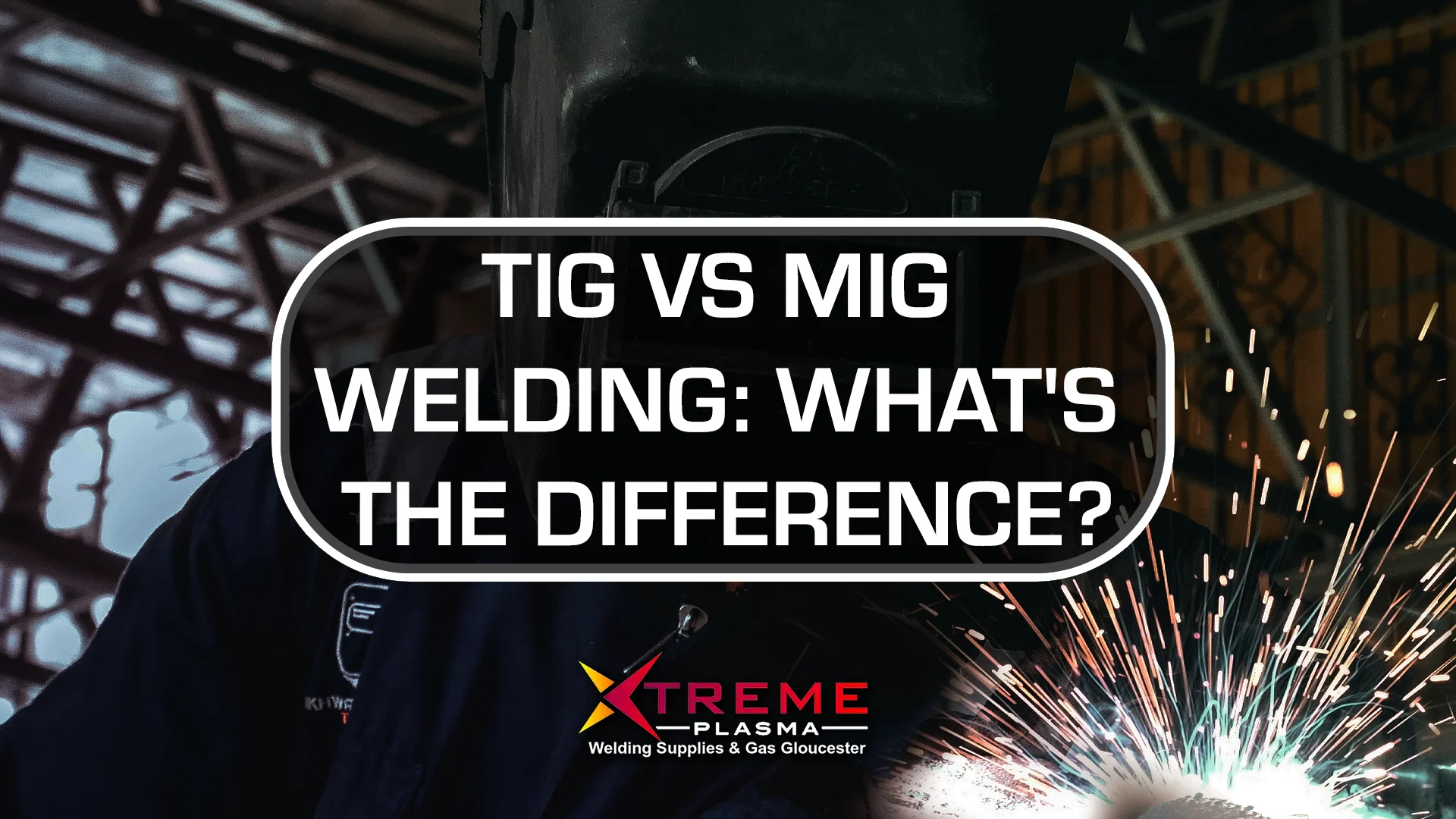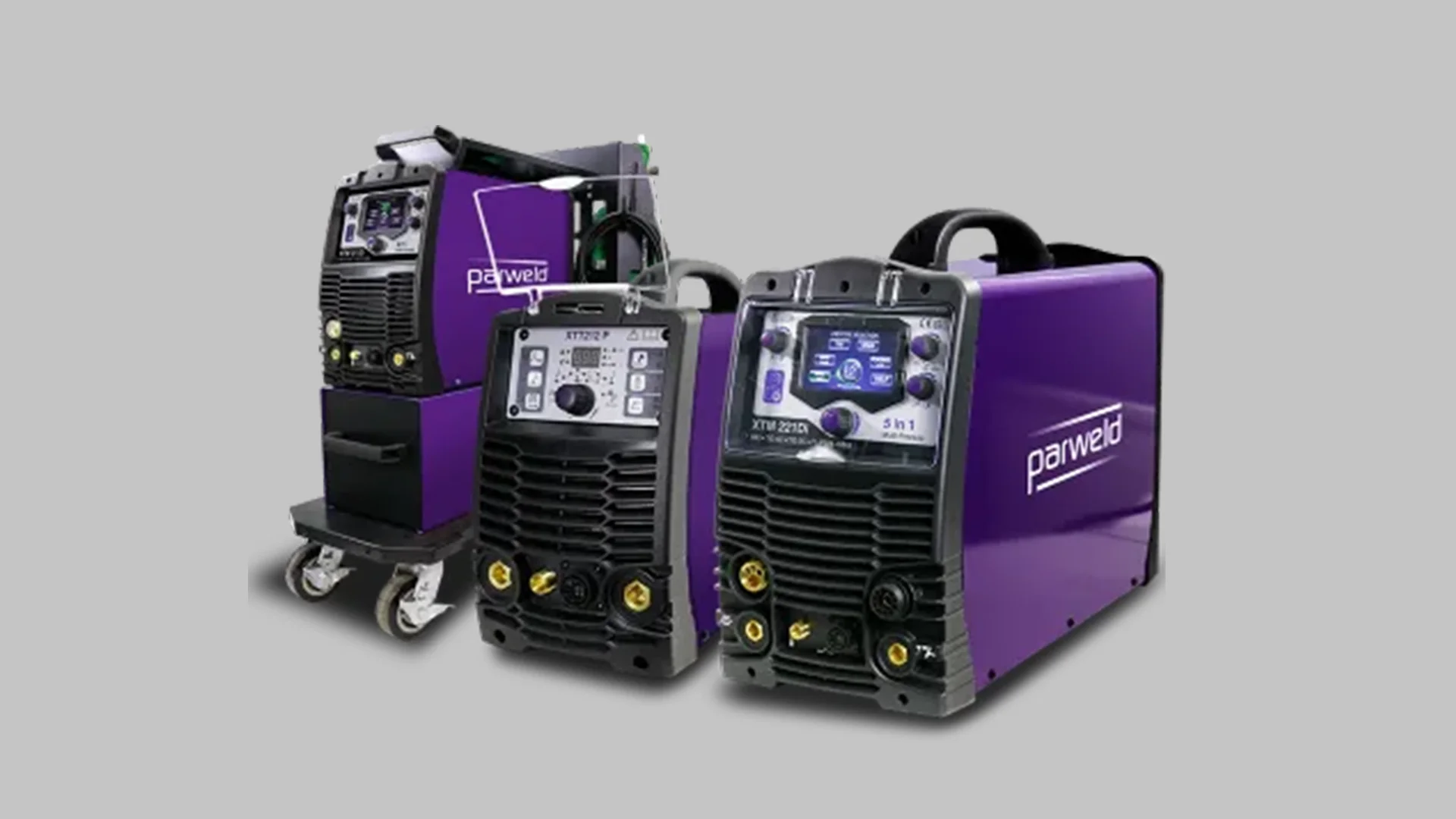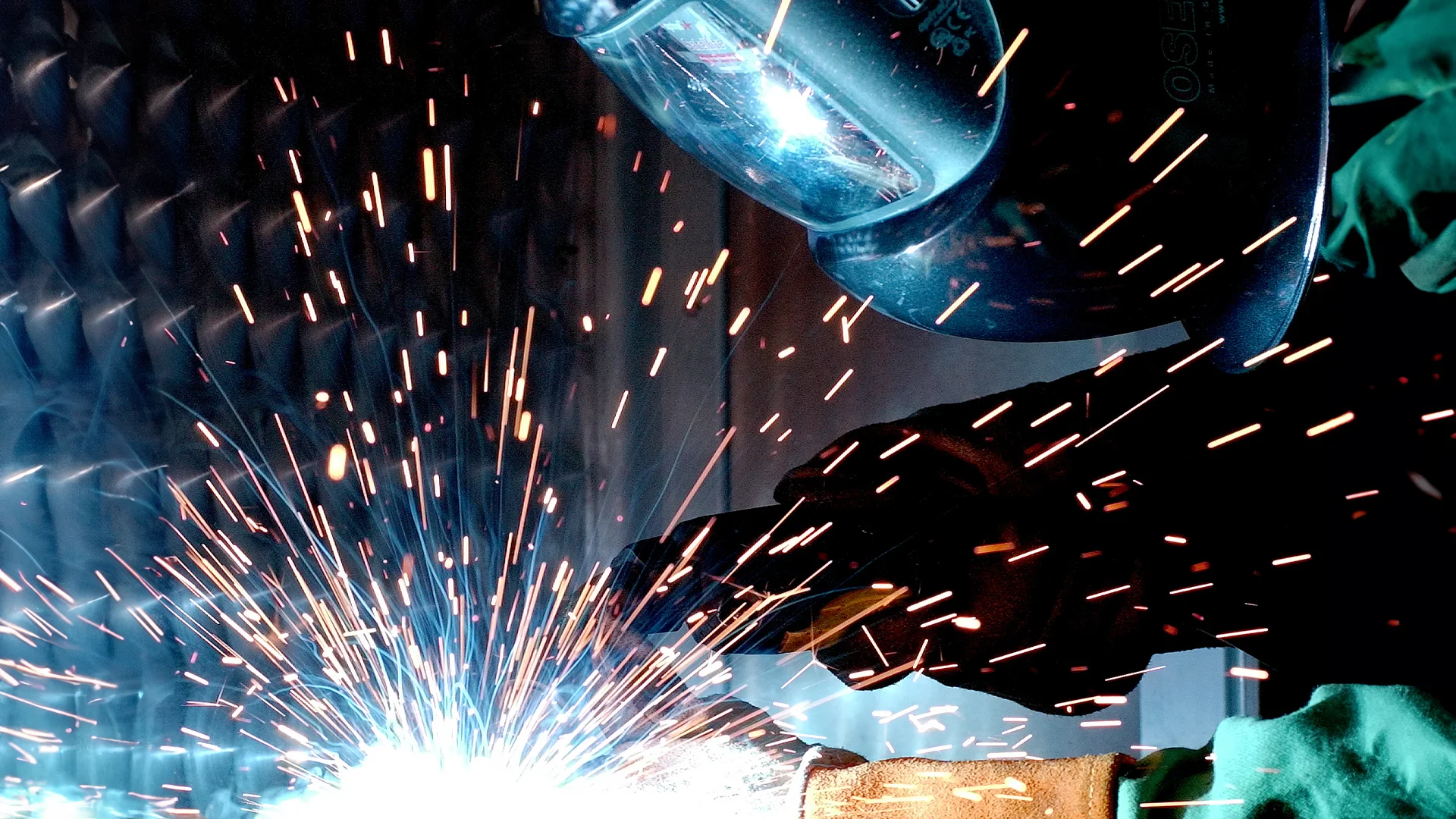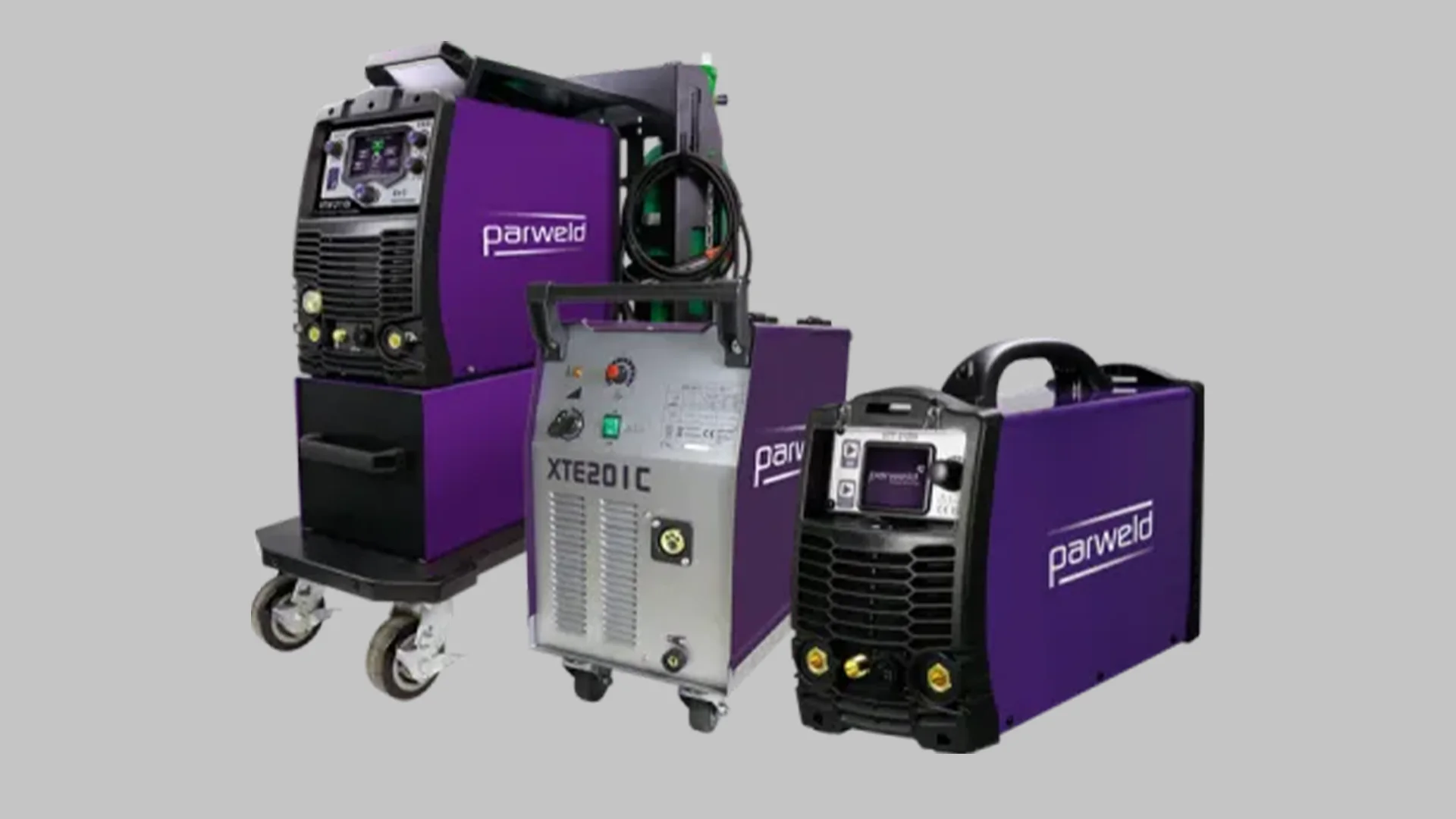Trade Counter Open Monday to Friday, 8.30am-5pm
TIG vs MIG Welding: What's The Difference?

Welding is an essential process in manufacturing, construction, and metalworking.
Two of the most commonly used welding methods are TIG (Tungsten Inert Gas) and MIG (Metal Inert Gas) welding.
But what is the difference between TIG vs MIG welding?
Both techniques have unique advantages and are suited for different applications.
Choosing between TIG and MIG welding depends on factors like precision, material type, cost, and ease of use.
Understanding the differences between these methods can help you decide which one is best for your needs.
This article will explain TIG vs MIG welding in detail, including how each method works, their advantages and downsides, and examples of welders available in the market.
By the end, you’ll have a clear understanding of which welding technique is most suitable for your projects.
What is TIG Welding?

TIG welding is a precise welding process used for high-quality welds.
It uses a non-consumable tungsten electrode to create an electric arc that melts the metal.
An inert gas, usually argon, shields the weld from contamination.
TIG welding is known for producing clean, strong, and aesthetically pleasing welds with minimal spatter.
It works well with various metals, including stainless steel, aluminium, copper, and titanium.
This makes it a preferred method in industries like aerospace, automotive, and fine metal fabrication.
Unlike MIG welding, TIG welding allows for greater control over heat and weld appearance.
However, it requires more skill and can be slower compared to other welding methods.
It is ideal for applications where precision, durability, and weld quality are more important than speed.
How Does TIG Welding Work?
TIG welding, or Tungsten Inert Gas welding, is a precise and controlled process.
It uses a non-consumable tungsten electrode to join metals.
Let’s look at how it works in a simple, step-by-step way.
Electric Arc Creation
TIG welding begins with an electric arc.
This arc is formed between the tungsten electrode and the metal being welded.
Electricity flows through the electrode, creating intense heat.
This heat melts the surface of the metal.
Shielding with Inert Gas
A steady flow of inert TIG welding gas, usually argon, surrounds the arc.
This gas is crucial.
It creates a protective barrier that shields the hot weld from the air.
Without it, elements like oxygen and nitrogen could weaken the weld or cause defects such as porosity and cracking.
Using a Filler Rod
In many cases, a separate filler rod is added by hand.
As the welder moves the torch along the joint, they feed this rod into the molten weld pool.
The filler melts and fuses with the base metals.
For some welds, especially thin ones, the metals can be joined without filler.
Manual Control
TIG welding requires both hands: one to move the torch, the other to feed the rod.
A foot pedal often controls the heat.
This setup gives the welder fine control over the arc and temperature.
Result
The result is a strong, clean, and precise weld. It’s ideal for delicate work, exotic metals, and professional-grade finishes.
Examples of TIG Welders

There are many TIG welders on the market, each designed for different needs.
Here are four popular models known for their performance, ease of use, and build quality.
Parweld XTT 212Di
The Parweld XTT 212Di is a professional-grade TIG welder ideal for aluminium and stainless steel.
It offers high-frequency start, pulse control, and excellent arc stability.
It’s a favourite among fabricators and auto body specialists who need precise control and clean welds.
GYS Protig 161 DC TIG Welder
This compact machine is known for its reliability and versatility.
The GYS Protig 161 is perfect for DC TIG welding on steel, stainless steel, and copper.
It’s lightweight, portable, and ideal for on-site repairs or workshop use.
SIP HG2200P TIG/Arc Inverter Welder
The SIP HG2200P is a multi-functional welder that supports both TIG and MMA (Arc) welding.
With a digital display and adjustable settings, it’s suitable for both beginners and experienced welders.
It provides smooth, stable performance for detailed work.
Tigren TGN200TIG DC TIG Inverter Welder
This is a cost-effective yet capable machine.
The Tigren TGN200TIG offers excellent DC TIG performance, user-friendly controls, and solid construction.
It’s a great choice for hobbyists and small workshops needing precision without breaking the bank.
TIG Welding Advantages
TIG welders offer many advantages, especially when precision and quality are important.
It’s often the first choice for jobs where neat, clean welds are essential.
High-Quality Welds
TIG welding produces very precise and clean welds.
It allows the welder full control over the heat and filler material, which results in neat seams with little or no spatter.
This makes it ideal for visible welds or thin materials.
No Spatter or Smoke
Because it uses a non-consumable tungsten electrode and an inert shielding gas, TIG welding creates very little spatter or smoke.
The process is clean and doesn’t leave behind much residue.
Works on a Wide Range of Metals
TIG welding works well on many materials, including aluminium, stainless steel, copper, and more.
It is especially suited to welding thin metals and doing fine, detailed work.
Precise Control
Welders can adjust the heat with great accuracy using a foot pedal or hand control.
This means they can stop and start easily, making TIG ideal for complex shapes or tricky joints.
TIG Welding Downsides
While TIG welding offers many benefits, it also comes with a few downsides.
These can affect whether it’s the right choice for certain jobs.
Slower Process
TIG welding is much slower compared to other welding methods like MIG.
Each weld takes more time because it requires greater precision and control.
This makes it less suitable for high-volume work or when speed is important.
Requires More Skill
TIG welding is not beginner-friendly. It takes time to learn and master.
Welders must control the torch, filler rod, and foot pedal all at once, which demands good coordination and steady hands.
Higher Equipment Costs
TIG welders and accessories are often more expensive than other types.
The machines are advanced and include features like pulse control and high-frequency start, which adds to the cost.
Less Effective on Dirty Metals
TIG welding works best on clean, polished metals.
Any dirt, rust, or oil can interfere with the weld quality.
Extra preparation is needed before starting, which adds time and effort.
What is MIG Welding?

MIG welding stands for Metal Inert Gas welding.
It is a popular and widely used welding process that joins metals using a continuous wire electrode.
The wire is fed through a welding gun and melts as it forms the weld.
At the same time, an inert shielding gas flows through the gun to protect the weld from air contamination.
MIG welding is known for its speed, ease of use, and versatility.
It works well on a variety of metals, including mild steel, stainless steel, and aluminium.
The process is semi-automatic, making it quicker to learn compared to TIG welding.
Because of its efficiency, MIG welding is commonly used in automotive repair, construction, and manufacturing.
It’s ideal for producing clean, strong welds with less effort, especially on thicker materials or larger projects.
How Does MIG Welding Work?
MIG welders use a process that joins metals by creating an electric arc between a wire electrode and the workpiece.
It uses heat to melt both the wire and the base metal, allowing them to fuse together.
The Wire Electrode
In MIG welding, a thin metal wire is continuously fed through the welding torch.
This wire acts as both the electrode (to create the arc) and the filler material (to join the metals).
The wire melts during the process and fills the weld joint.
The Arc and Heat Generation
When the welder pulls the trigger on the torch, an electric current flows through the wire.
As the wire touches the metal surface, an arc is created.
This arc produces intense heat which melts the wire and base metal.
Shielding Gas Protection
To protect the molten weld from air, a MIG welding gas is released through the torch.
Common gases include argon, CO₂, or a mix of both.
These gases stop oxygen and moisture from contaminating the weld, which could lead to weak joints or porosity.
Welding Control
MIG welding is often considered semi-automatic.
The machine controls the wire feed speed and voltage.
The welder controls the direction and travel speed.
This setup allows for faster welding, especially on large or thick metal surfaces.
Examples of MIG Welders

There are many MIG welders on the market, designed for different users and needs.
Below are four popular models, each offering a mix of power, reliability, and ease of use.
GYS Neopulse 220 XL
The GYS Neopulse 220 XL is a high-performance inverter welder designed for professional use.
It offers advanced digital control and is suitable for welding steel, stainless steel, and aluminium.
With a compact and lightweight design, it's ideal for on-site work or busy workshops.
SIP Autoplus Eco Mig180 Inverter Welder
The SIP Autoplus Eco Mig180 Inverter Welder is known for being energy-efficient and user-friendly.
It's a great choice for small to medium-scale welding tasks.
It features adjustable settings, making it suitable for both beginners and experienced welders.
Parweld XTM 221-p3 5 In 1 Multi-process Inverter
Parweld XTM 221-p3 5 In 1 Multi-process Inverter can handle MIG, TIG, and MMA welding.
It’s ideal for those who need flexibility. With digital controls and a sturdy design, it's popular among serious hobbyists and professionals alike.
SIP HG4500 MIG Inverter Welder
This SIP HG4500 MIG Inverter Welder is designed for heavy-duty applications.
It includes a separate wire feed unit (SWF) for better wire control.
It's best suited for long production runs or thick materials.
MIG Welding Advantages
MIG welding is popular for many good reasons.
It’s widely used in both industrial and home settings because it’s fast, clean, and easy to learn.
Ease of Use
One of the biggest advantages of MIG welding is its simplicity.
The automatic wire feed allows for smooth and continuous welding, making it ideal for beginners.
You don’t need to manage the filler material manually, which reduces mistakes and saves time.
Speed and Efficiency
MIG welding is much faster than TIG welding.
It’s great for large jobs or production environments where speed is important.
The continuous wire feed also means fewer interruptions, leading to more efficient work.
Clean Welds with Less Waste
The shielding gas protects the weld pool from contamination.
This results in cleaner, more precise welds with minimal spatter.
Less cleaning and grinding means more time saved.
Versatile Applications
MIG welding can be used on a wide range of metals, including steel, stainless steel, and aluminium.
It also works well with thin or thick materials.
Affordable Equipment
MIG welding machines are often more affordable and easier to maintain than TIG welders.
They’re a solid choice for workshops with varied tasks and tight budgets.
MIG Welding Downsides
While MIG welding is popular, it’s not perfect for every job.
There are a few downsides to consider before choosing this method.
Not Ideal for Outdoor Use
MIG welding uses shielding gas to protect the weld from contamination.
In outdoor environments, wind can blow the gas away, exposing the weld to air.
This leads to poor weld quality and defects.
Less Precision Than TIG
MIG welding is faster, but it doesn’t offer the same level of control as TIG welding.
If your project needs very neat or detailed welds, like in artwork or automotive bodywork, MIG may fall short.
Limited Positions
MIG welding works best in flat and horizontal positions.
It’s harder to get consistent welds when working overhead or in tight corners.
Higher Spatter Levels
Although cleaner than some methods, MIG still produces more spatter than TIG welding.
This means more clean-up time and the risk of imperfections on the surface.
Thicker Welds Can Be Bulky
MIG welds are usually thicker and may not look as refined.
This isn’t an issue for heavy-duty tasks, but it’s not ideal for cosmetic welds.
TIG vs MIG Welding: What's The Difference?
|
Feature |
TIG Welding |
MIG Welding |
|
Weld Quality |
Clean, precise, and visually appealing |
Strong but less refined |
|
Speed |
Slow |
Fast |
|
Skill Level |
Requires more skill and control |
Easier to learn |
|
Material Thickness |
Best for thin materials |
Best for thick materials |
|
Cost |
More expensive |
More affordable |
|
Spatter |
Minimal |
More cleanup required |
|
Shielding Gas |
Required |
Required |
|
Common Uses |
Aerospace, automotive, fine metalwork |
Manufacturing, construction, general fabrication |
Conclusion
You should now have more of an understanding of the difference between TIG vs MIG welding.
Both TIG and MIG welding have their own strengths and weaknesses.
TIG welding is best for precise, high-quality welds, while MIG welding is faster and more efficient for thicker materials.
If you need clean, detailed welds and don’t mind a slower process, TIG welding is the right choice.
If you need speed and efficiency for large projects, MIG welding is the better option.
By understanding the differences between TIG and MIG welding, you can choose the best method for your specific needs.
For more information, or help with all your welding needs, get in contact with us here at Xtreme Plasma.
Powered by Lightspeed
Display prices in:GBP
